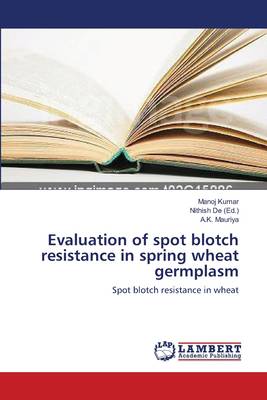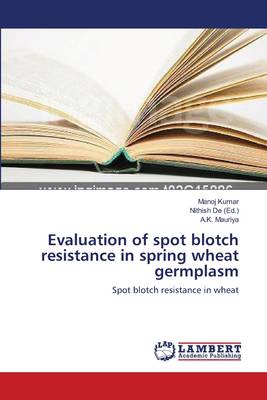
- Afhalen na 1 uur in een winkel met voorraad
- Gratis thuislevering in België vanaf € 30
- Ruim aanbod met 7 miljoen producten
- Afhalen na 1 uur in een winkel met voorraad
- Gratis thuislevering in België vanaf € 30
- Ruim aanbod met 7 miljoen producten
Zoeken
Evaluation of spot blotch resistance in spring wheat germplasm
Spot blotch resistance in wheat
Manoj Kumar, A K Mauriya
Paperback | Engels
€ 35,45
+ 70 punten
Omschrijving
The investigation on wheat was conducted with the objective to study variability for spot blotch resistance caused by B. sorokiniana in the wheat germplasm lines and to find out the distribution of resistance across various height and maturity groups. Observations were recorded for disease severity (%) as well as using 0-9 scale. Disease was rated three times i.e. at growth stages 69, 77 and 83 (Zadoks et.al.1974) to calculate AUDPC. Plant height, days to maturity and test weight was also recorded for each genotype. A wide variability for resistance to spot blotch was observed in the wheat lines screened.15 lines were found to have resistant. The proportion of moderately resistant, moderately susceptible and susceptible lines were 47%, 43% and 6% respectively.The useful resistant lines having dwarf stature and early days to maturity were 15. These lines can be exploited in crossing programme to developing spot blotch resistant early maturing lines suited to rice wheat cropping system of NEPZ.Differential reaction was also observed in same line that supported the idea of independent gene control.
Specificaties
Betrokkenen
- Auteur(s):
- Uitgeverij:
Inhoud
- Aantal bladzijden:
- 56
- Taal:
- Engels
Eigenschappen
- Productcode (EAN):
- 9783659401381
- Verschijningsdatum:
- 31/05/2013
- Uitvoering:
- Paperback
- Formaat:
- Trade paperback (VS)
- Afmetingen:
- 152 mm x 229 mm
- Gewicht:
- 95 g

Alleen bij Standaard Boekhandel
+ 70 punten op je klantenkaart van Standaard Boekhandel
Beoordelingen
We publiceren alleen reviews die voldoen aan de voorwaarden voor reviews. Bekijk onze voorwaarden voor reviews.











